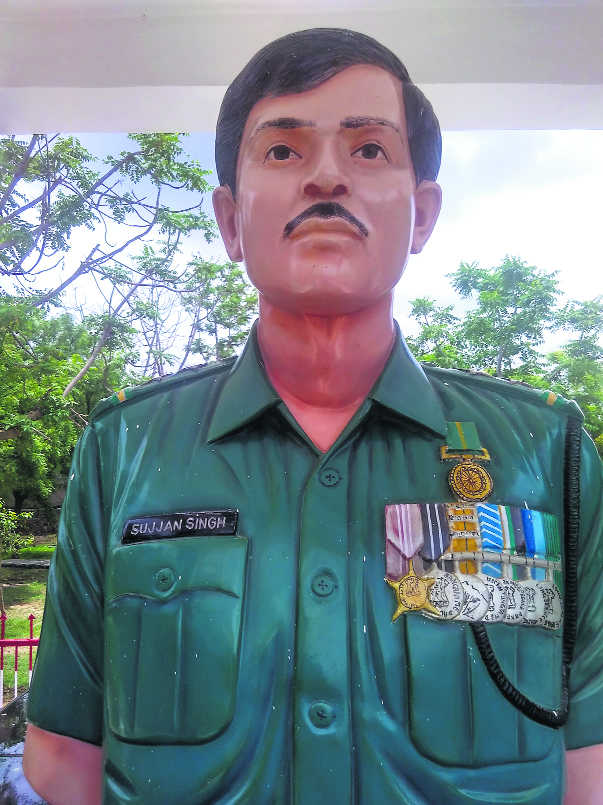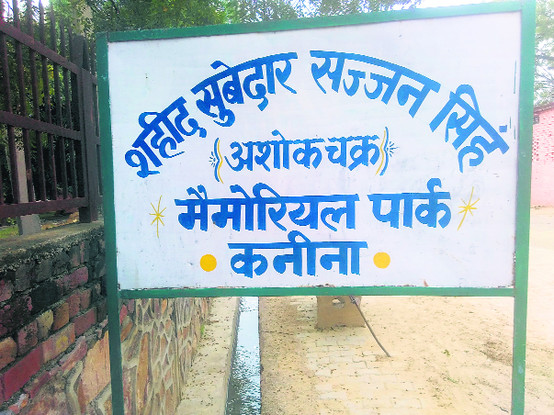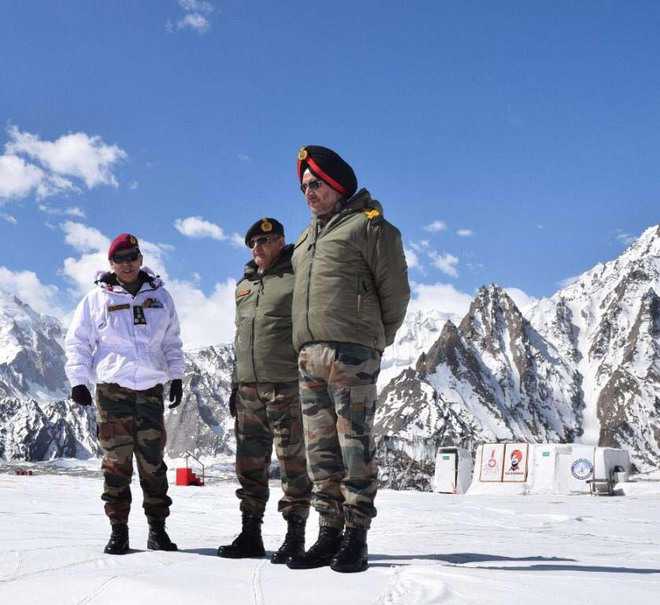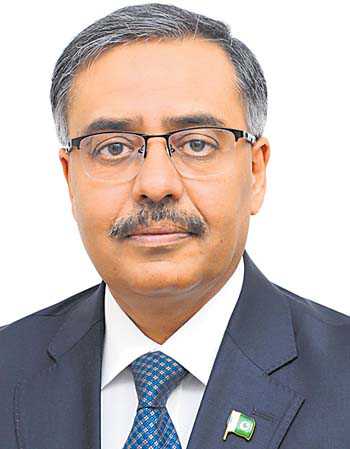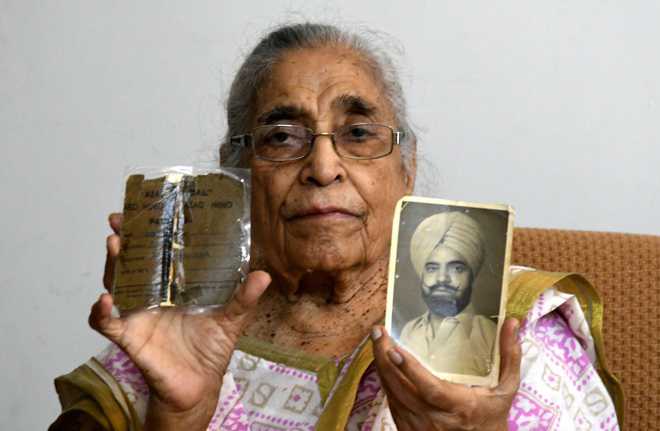
Equbal Kaur shows the pay book and photo of her husband. Pradeep Tewari
Vishav Bharti
Tribune News Service
Chandigarh, August 12
Her eyes well up when she recites “Qadam qadam badhaye ja”… a song that her husband used to sing the whole night with his comrades from the Indian National Army. However, it seems their contribution has been forgotten long ago, thanks to the Chandigarh Administration, which pays peanuts to its freedom fighters and has not increased their pension for the past one decade. A paltry Rs 2,500 is what Equbal Kaur (84), widow of Lt Harbhajan Singh of the Indian National Army, and five other beneficiaries of the Freedom Fighters’ Pension Scheme get in Chandigarh. “Just six of us are left now. An amount of Rs 15,000 per month is the complete bill the UT Administration foots for pension of all freedom fighters. Haryana pays Rs 30,000 to each of them,” she says. While in the UT, freedom fighters’ kin get peanuts under Samman Pension, Punjab pays Rs 7,500 and is planning to increase it to Rs 15,000. There are 1,199 freedom fighters in the state.The scheme was notified as Chandigarh Swatantrata Sainik Samman Pension Scheme, 1994. However, the Administration started paying pension of Rs 250 with effect from October 1993. It was increased to Rs 1,500 on the golden jubilee celebrations of Independence in 1997. The last increase was a decade ago in July 2008 when the pension was increased from Rs 2,000 to Rs 2,500.The Chandigarh Administration has failed to increase the pension despite the fact that the Ministry of Home Affairs has directed the state governments and union territories to link the pension to the Consumer Price Index.In the past one decade, Equbal Kaur has given several representations to the Chandigarh Administration. She says her husband suffered from cancer before passing away in 2008. “However, it was not easy even to get peanuts. I used to hire a taxi to take him to the Deputy Commissioner’s office in Sector 17 and then with the help of others, he used to climb the stairs to get the pension every month.”After a lot of struggle, the Chandigarh Administration started direct transfer of the amount. Now, she has given another representation to increase the pension to bring it on a par with neighbouring states. “I don’t wish to be dependent upon anybody, not even my daughters,” she has told the Administration.Equbal Kaur has endless stories to share about her husband — how he was recruited in Hong Kong, got injured in the jungles of Burma and later became a prisoner of war in Nilganj Camp in April 1945. How just after their marriage, she, along with him, met his two comrades, Chaman Lal and Jaswant Singh, in Delhi and they sang songs of the INA the whole night. “I told their wives, let them sing. They have met after a long time.”After going through a bundle of papers turning yellow over the years and black and white photographs, she fishes out a couple of laminated pages. This is Harbhajan Singh’s pay book from the INA days. Wherever he stayed, he always kept it close to his heart. Perhaps it was the only memorabilia from the INA he had, she says. Then flipping the pages, after a long pause, she casually points to an entry of February 16, 1945, made in fountain pen: “Look! He used to get Rs 150 in 1945. Now, I get Rs 2,500. Can you calculate the difference for me?”
Six beneficiaries in Chandigarh
- Rattan Kaur, w/o Joginder Singh
- Vimla Mehra, w/o Ved Prakash Mehra
- Sarda Devi, w/o Tek Ram Joshi
- Santosh Dhir, w/o OP Dhir
- Nasib Kaur, w/o Arjan Singh
- Equbal Kaur, w/o Harbhajan Singh
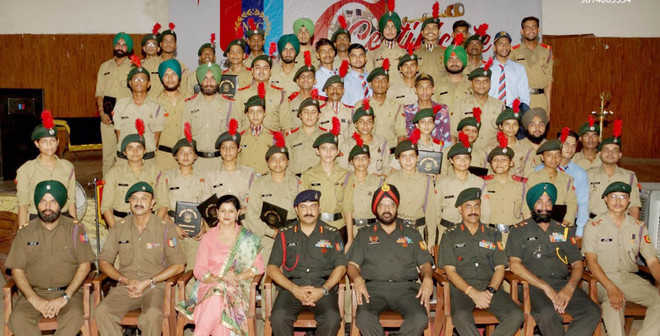








 AP
AP

